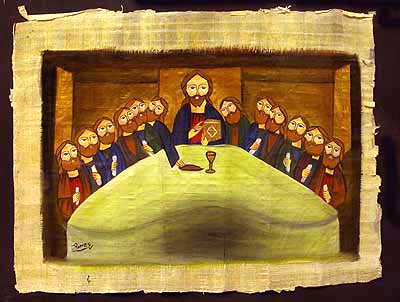Fig. 1 Pardeshi ("Foreigner") Synagogue, Cochin, Kerala
Although Jews are one of the smallest minorities in India, with a population of only a few thousand, they have existed in India for thousands of years. While they were subjected to the worst persecution in the history of religions in the rest of the world, they received patronage from the rulers and the elite class in India and lived a life of ease and comfort. In return, they contributed to the trade and commerce of the region.
It's difficult to say when the first Jewish group arrived in India, but the earliest of them claim to have arrived in Kerala from Judea as early as 2500 years ago as traders and more groups came around 70 c CE after the destruction of the Second Temple. They have several synagogues in Kerala, the most exquisite being the Pardeshi Synagogue built in 1568 (see Figs. 1&2). They acquired land from the local Hindu king and built this synagogue there and also lived in this area as aristocrats.
Fig. 2 Pardeshi Synagogue, Cochin, Kerala
Another group of Jews arrived around 2100 years ago south of Bombay and they were referred to as Beni Israel, as distinct from the Kerala Jews. They engaged mostly in oil pressing and were regarded as Telis or oil pressers by the local Indian population. They lived in the area covering Bombay, Pune and Ahmedabad.
The European Jews came to India as traders from the 16th century onwards, when Europe had begun to expand commercial contacts with India. We have many references in the Mughal sources about the Jewish traders in India, who travelled and settled in different parts of the Mughal Empire. Akbar the Mughal Emperor used to hold inter-faith religious discussions in his Ibadatkhana at his Fatehpur Sikri Palace near Agra and Jewish scholars used to participate in these discussions. Jewish scholars held a special position with the Mughal royal family during Emperor Shah Jahan's time.
Fig. 3 Shrine of Saint Sarmad, near Jama Masjid Main Entrance, Delhi
The most noted figure with Jewish antecedents close to the Mughal court during this time was Sarmad, a mystic saint. He was from Kashan in Persia. Originally a Jew, he came under the influence of Hinduism as well as Islam later in life. As he travelled to the Mughal empire like many others, he met a Hindu youth in Sindh and cultivated a friendship with him. He also engaged with Islamic leaders of his times. Thus, his mysticism drew various strands from Hinduism, Islam and Judaism. He walked naked in the streets of Delhi, which was not an uncommon feature of ascetics in India. The Mughal Crown-Prince Dara Shikoh, who had a special interest in engaging with the religious men from all faiths, had a special friendship with him.
The history was however, ordained to be written differently. Aurangzeb the younger brother of Dara Shikoh rebelled against his father Shah Jahan (builder of Taj Mahal), imprisoned him in Agra Fort, got his brothers including Dara Shikoh killed and ascended the Mughal throne. Since Sarmad had been close to Dara Shikoh, it was politically necessary for Aurangzeb to get him executed. However, he could not do so without providing a valid reason, since Sarmad was immensely popular. Hence, Aurangzeb got him summoned to the Mughal court and asked him to recite the Islamic creed (called kalma in India). Sarmad was influenced by many religions, but he didn't follow any religion in the conventional manner. Hence, instead of the entire sentence - "There is no God other than Allah and Muhammad is his Prophet," Sarmad recited only the first part - "There is no God." This gave Aurangzeb sufficient reason to get him executed on grounds of refusal to recite the Islamic creed. Sarmad's mausoleum (Fig. 3) lies opposite the main entrance of Jama Masjid in Delhi and is visited by people of different faiths alike, who pray to him to intercede with God on behalf of them.
Fig. 4 David Magen Synagogue, Bombay
Some 250 years ago came the waves of Jews from the West Asia and North-Western frontiers of the Indian Sub-Continent - Iran, Iraq, Afghanistan, Syria etc., who settled in Bombay. They are known variously as the Baghdadi or Persian Jews, eventhough they came from many countries. Their oldest synagogue is the David Magen Synagogue, built in old Bombay (Fig. 4).
The most interesting Jewish community in India is of the Bnei Menashe in the states of Manipur and Mizoram in the North-Eastern India. These tribes of Tibeto-Burman origin believe that they are a lost tribe of the Israel, descended from Menasseh, the son Of Joseph. According to their folklore, their ancestor was Manmasi, which they take to be the same as Menasseh. They have a harvest festival song which talks about how they escaped from the enemy, crossing the Red Sea, led by a pillar of cloud. They also traditionally worship a single god.
Fig. 5 Children of Bnei Menashe, on a festive gathering, Menorah on the right
Since the early 20th century, beginning with the Welsh missionaries, many conversions took place and most of the Mizo tribes and the tribal populations of Manipur became Christians. Thereby, in 1951, a Pentecostal called Chellianthanga is supposed to have dreamt that they were supposed to return to their ancestral religion, which he determined to be Judaism. Gradually, followers of Judaism in these tribes grew and they subsequently demanded to move to Israel. The State of Israel attempted a move of mass conversion of these tribes by sending some Rabbis before they could emigrate to Israel. Some 600 people were converted as a part of this move. However, Indian government protested at this proselytisation and Israel dropped its conversion plan of these North-East Indian tribals.
Judaism in India has thus, taken many forms and has existed through the long history of India, remaining a silent witness to the turmoils of this country. After the state of Israel was created, a large number of these Jewish populations emigrated to Israel. Now only a miniscule group is left here.

























